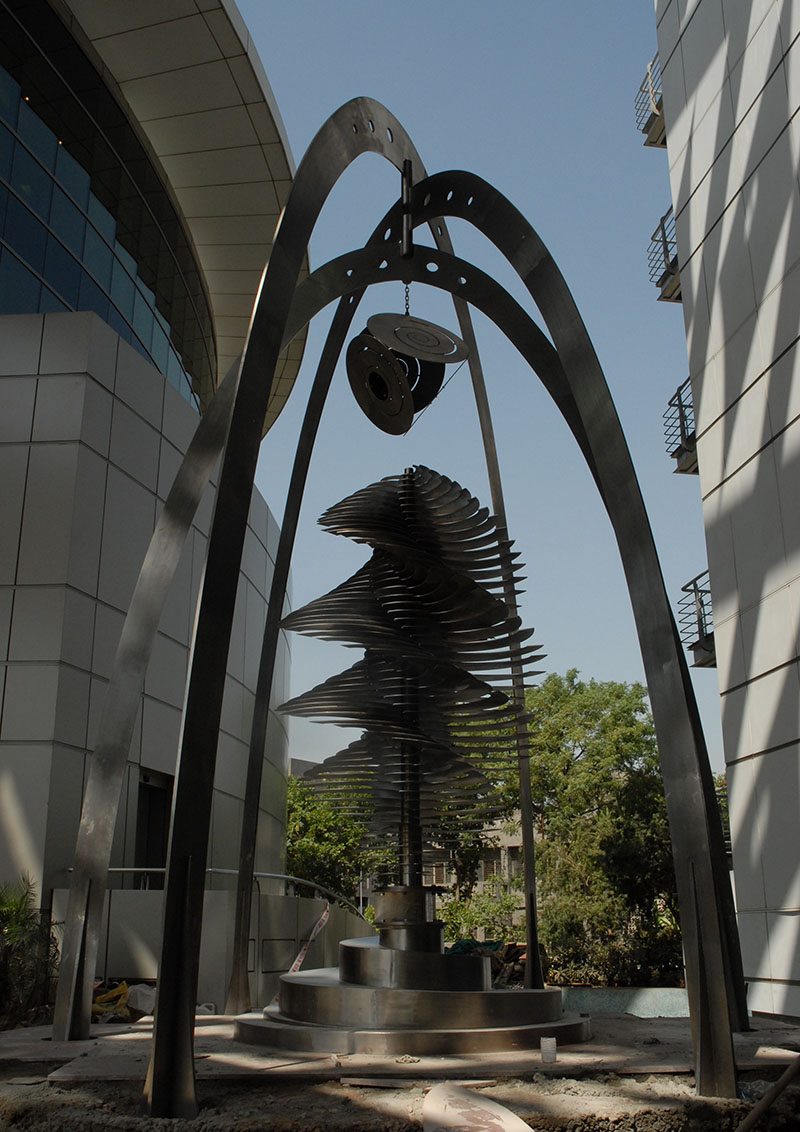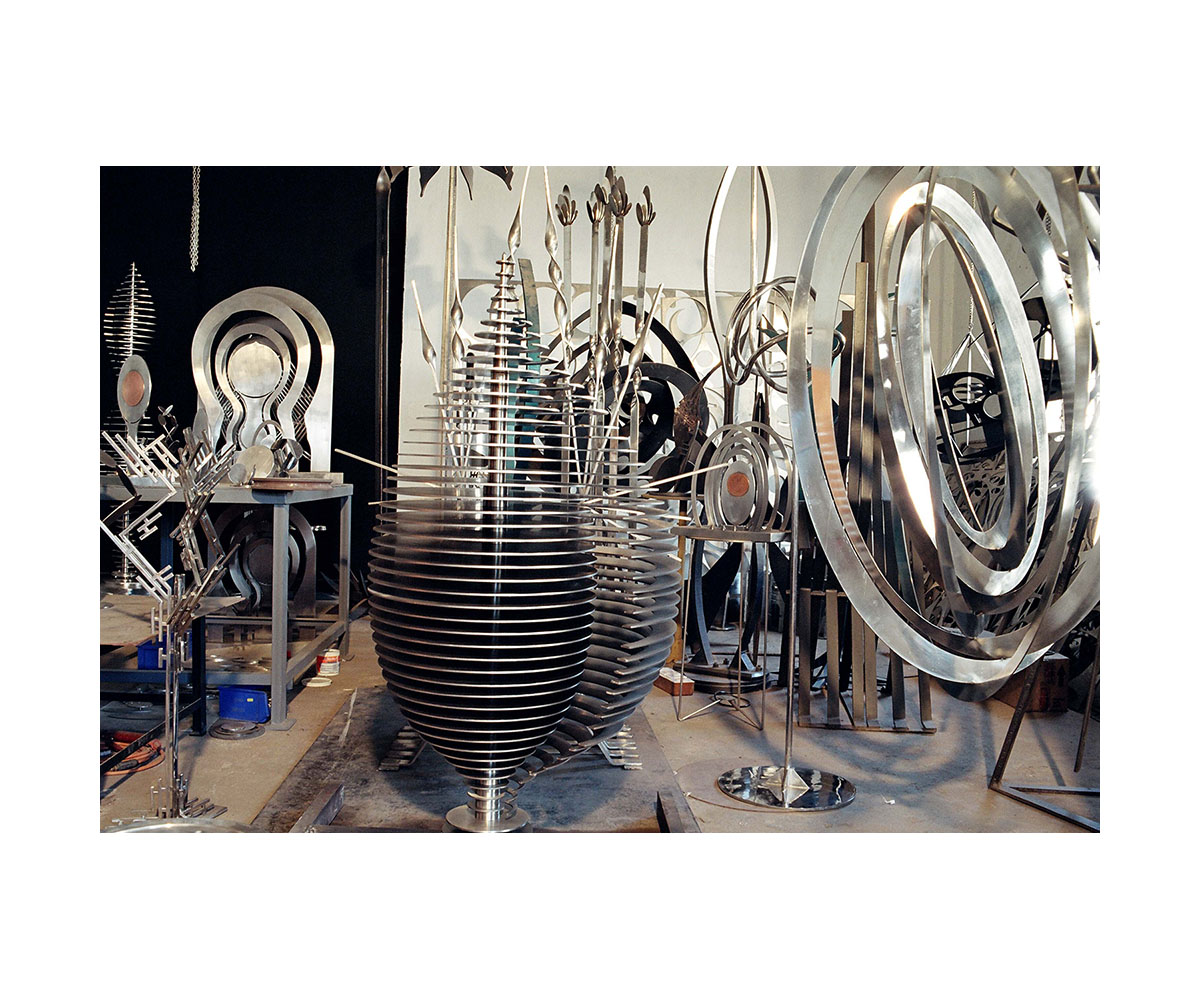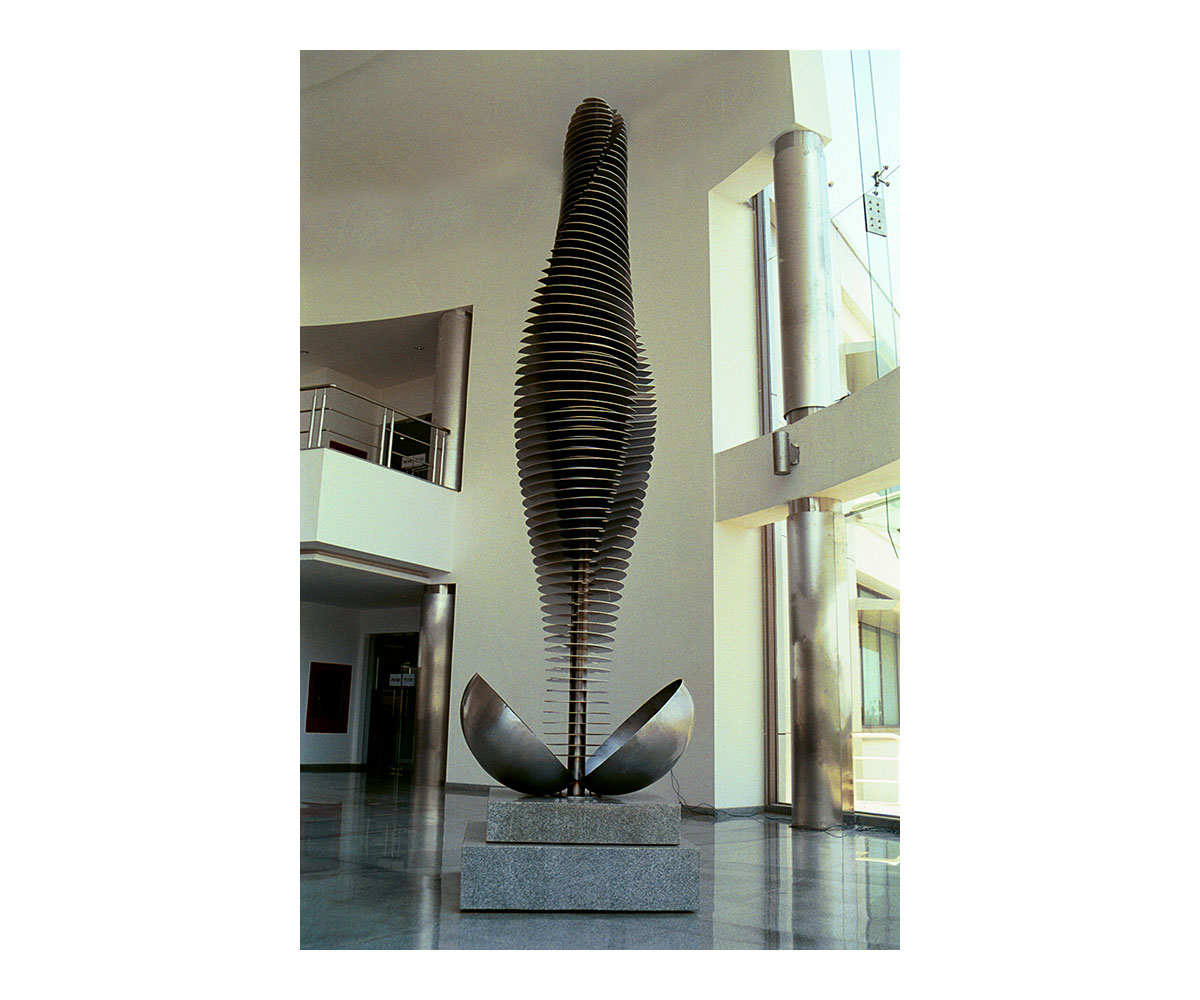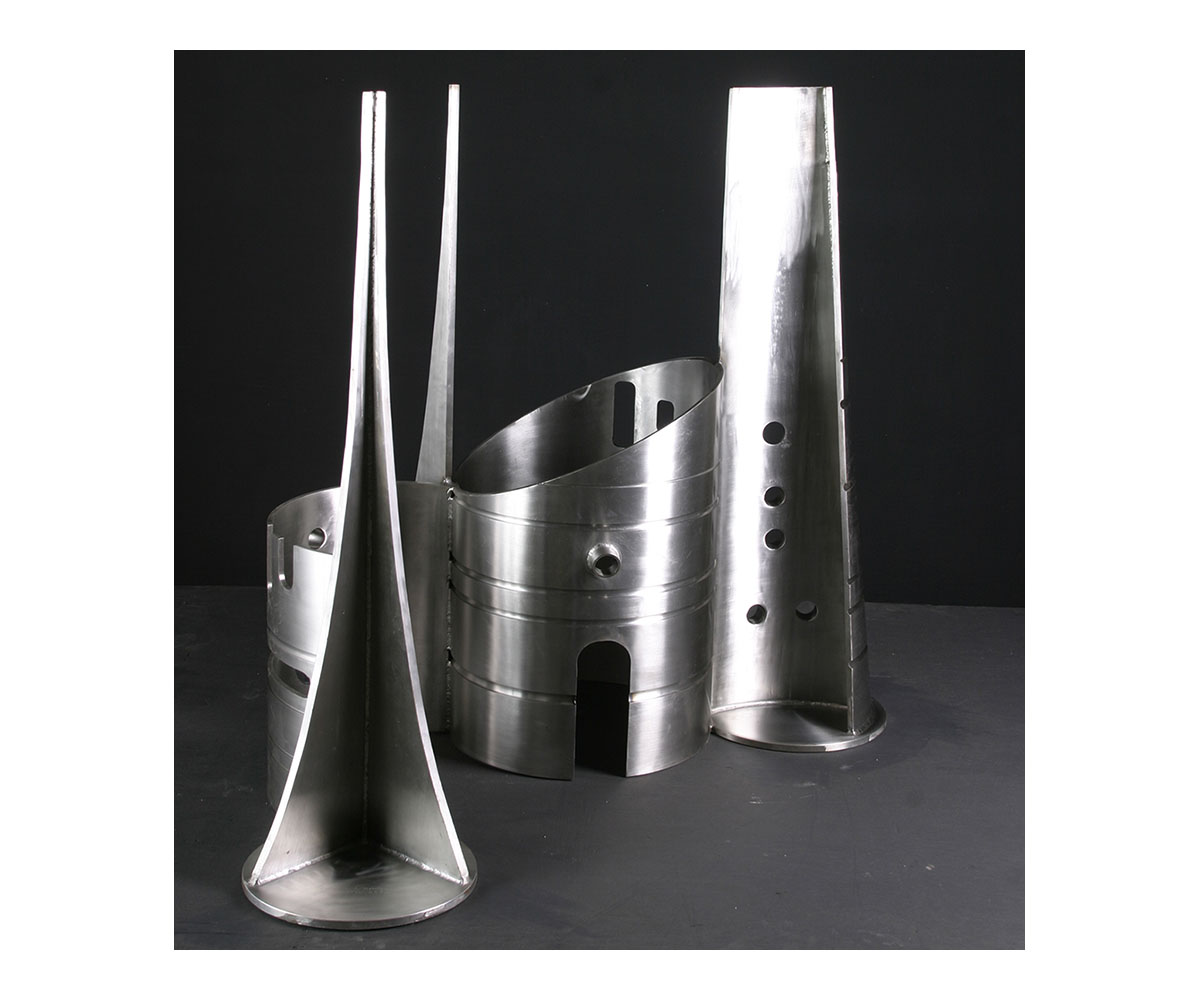ARTICLE
Balan Nambiar
Nambiar has also created several commissioned works for institutions and corporations. These include Symbol for time (1974) in mild steel for Hegde and Golay, Bengaluru; Mother Goddess (1978) in glassfibre-reinforced concrete for Portland Cement Factory, Germany; Valampiri Shankha (2000) in stainless steel for the Indian Institute of Science, Bengaluru; and Reach for the sky (2016) in stainless steel for Bank Note Paper Mill India, Mysore.
Nambiar has had thirty-five solo exhibitions in his long career, which began in 1974 with the landmark show of sculptures at Hotel Ashoka, Bangalore (now Bengaluru) in 1974 and gained critical recognition in 2018 with the retrospective Sculpting in Time at the National Gallery of Modern Art (NGMA), Bengaluru. He has represented India at the 1985 Venice Biennale, and participated in the Triennale–India, New Delhi as well as “Constructa-78,” Hanover Industrial Fair, Germany in 1978. He has also contributed to the permanent collections of national institutions such as NGMA, New Delhi and Bengaluru; the National Centre for Performing Arts (NCPA), Mumbai; Jawaharlal Nehru Centre for Advanced Scientific Research, Bengaluru; Ministry of Defence, New Delhi and the Salem Stainless Steel Factory. He is the recipient of several awards, among which are the National Award for sculpture from Lalit Kala Akademi, New Delhi in 1982 and the Raja Ravi Varma Puraskaram in 2015. He was a Senior Fellow, Ministry of Culture from 1982–83; a Nehru Fellow, Jawaharlal Nehru Memorial Fund from 1983–85; an Academy Fellow, Karnataka State Lalit Kala Akademi in 2005; and a Kalaratna Fellow, Kerala Sangeetha Nataka Akademi in 2013.
Nambiar served on the Central Advisory Board on Culture, Ministry of Culture, from 2008–11 and was the acting chairman of the Lalit Kala Akademi, New Delhi, in 2012. Since 1971, he has also been conducting art classes for children, several among whom have gone on to study art with some, such as Pushpamala M, who have achieved eminence in their field.
As of writing, the artist lives and works in Bengaluru.
Bibliography
Our website is currently undergoing maintenance and re-design, due to which we have had to take down some of our bibliographies. While these will be re-published shortly, you can request references for specific articles by writing to hellomapacademy@map-india.org.










